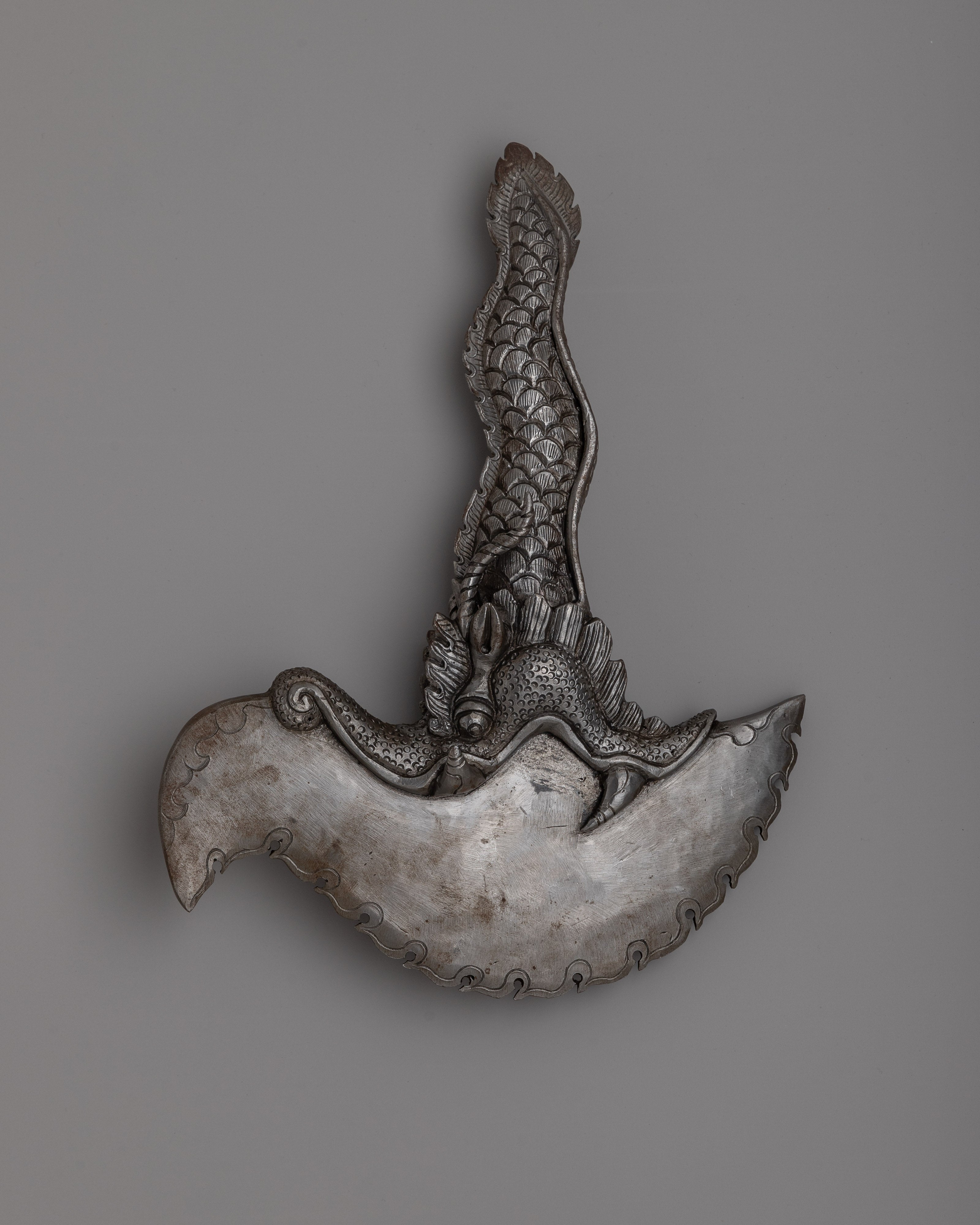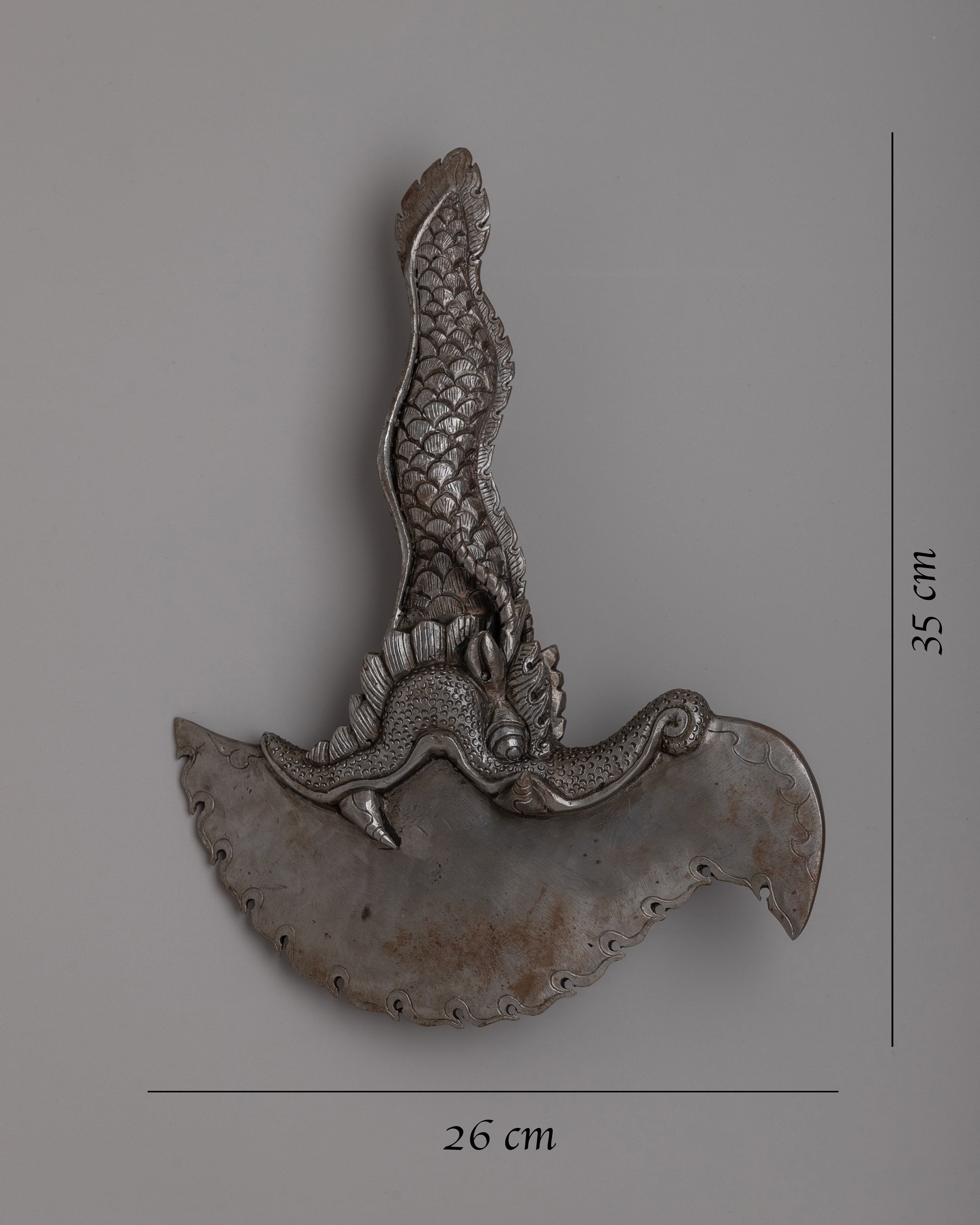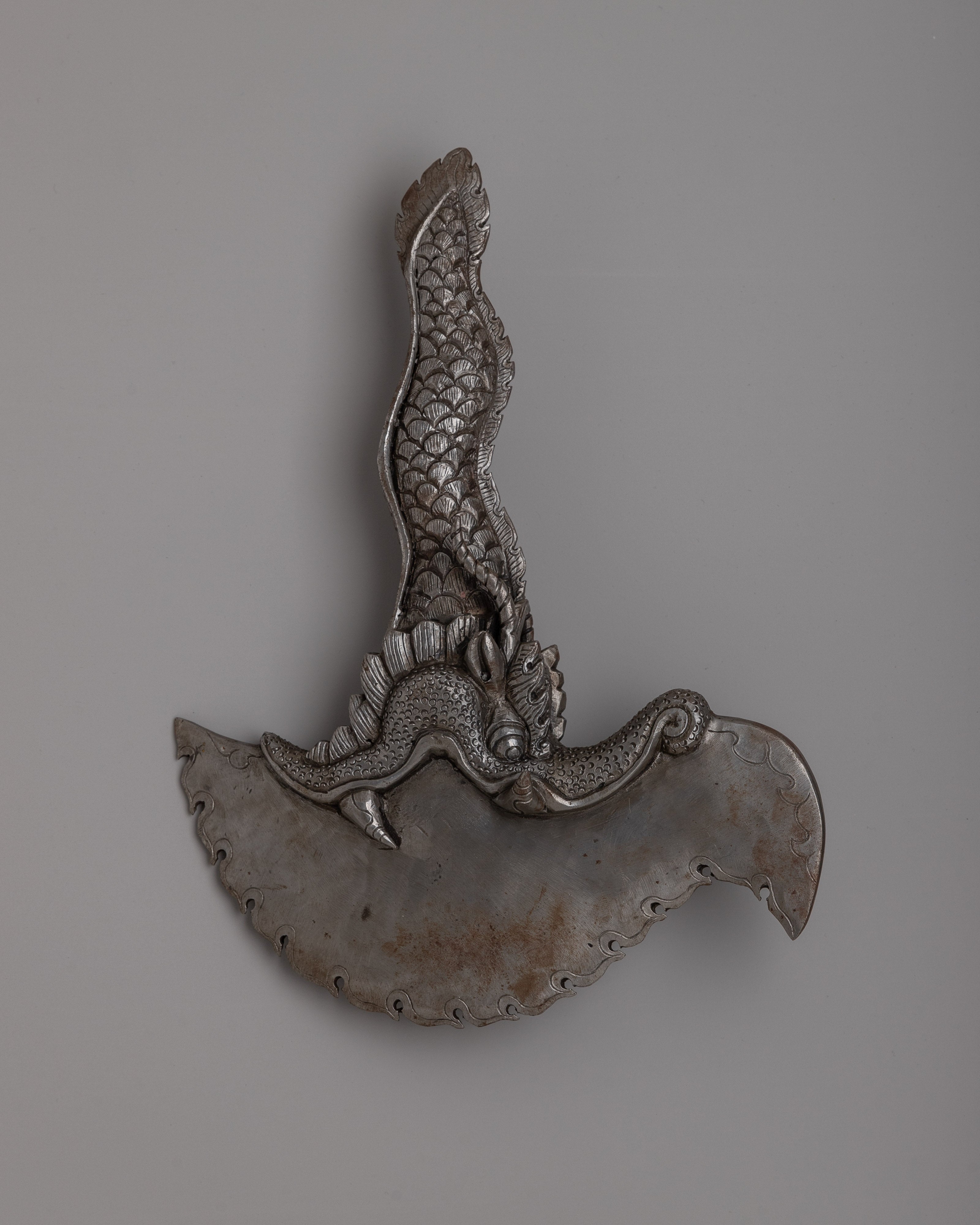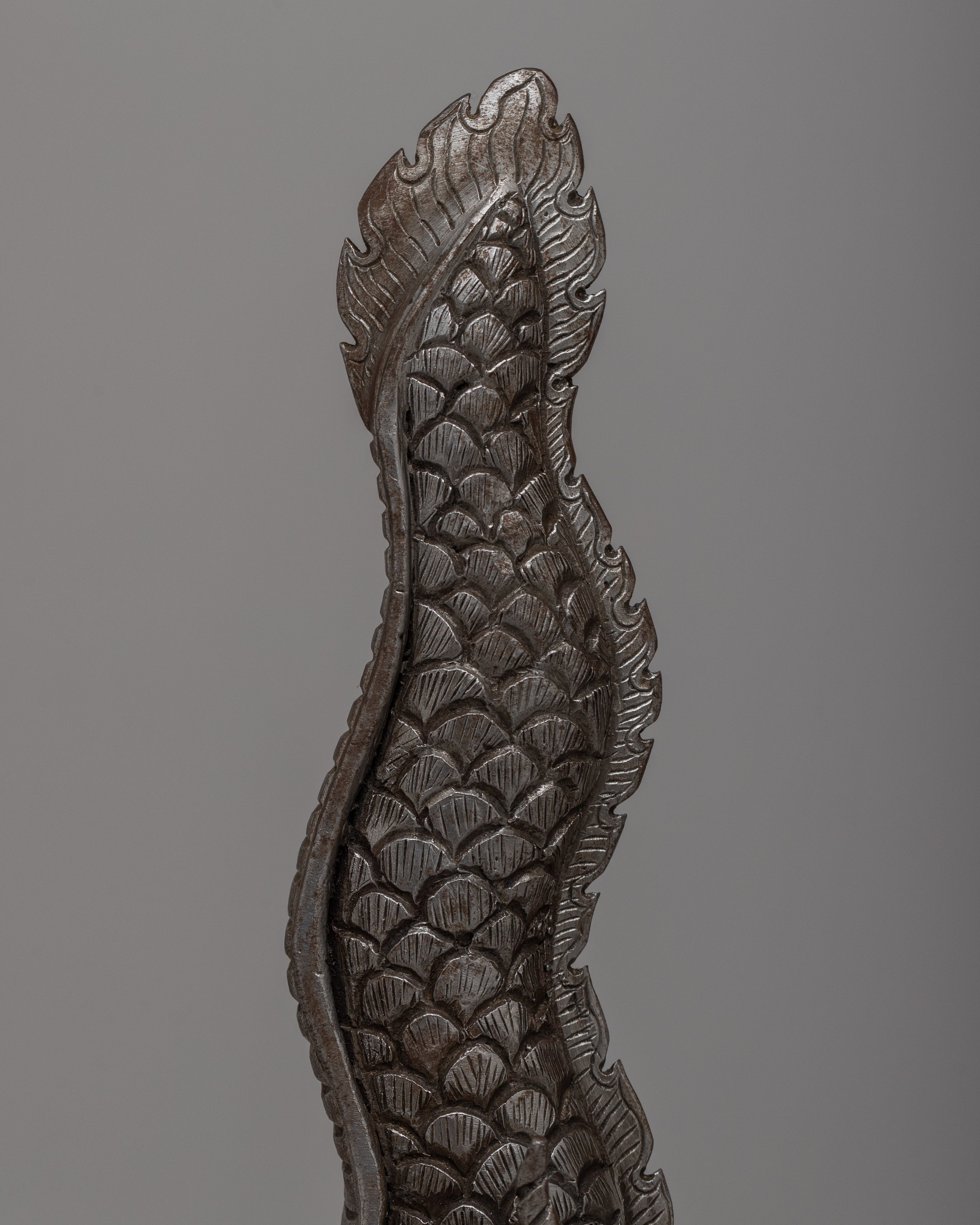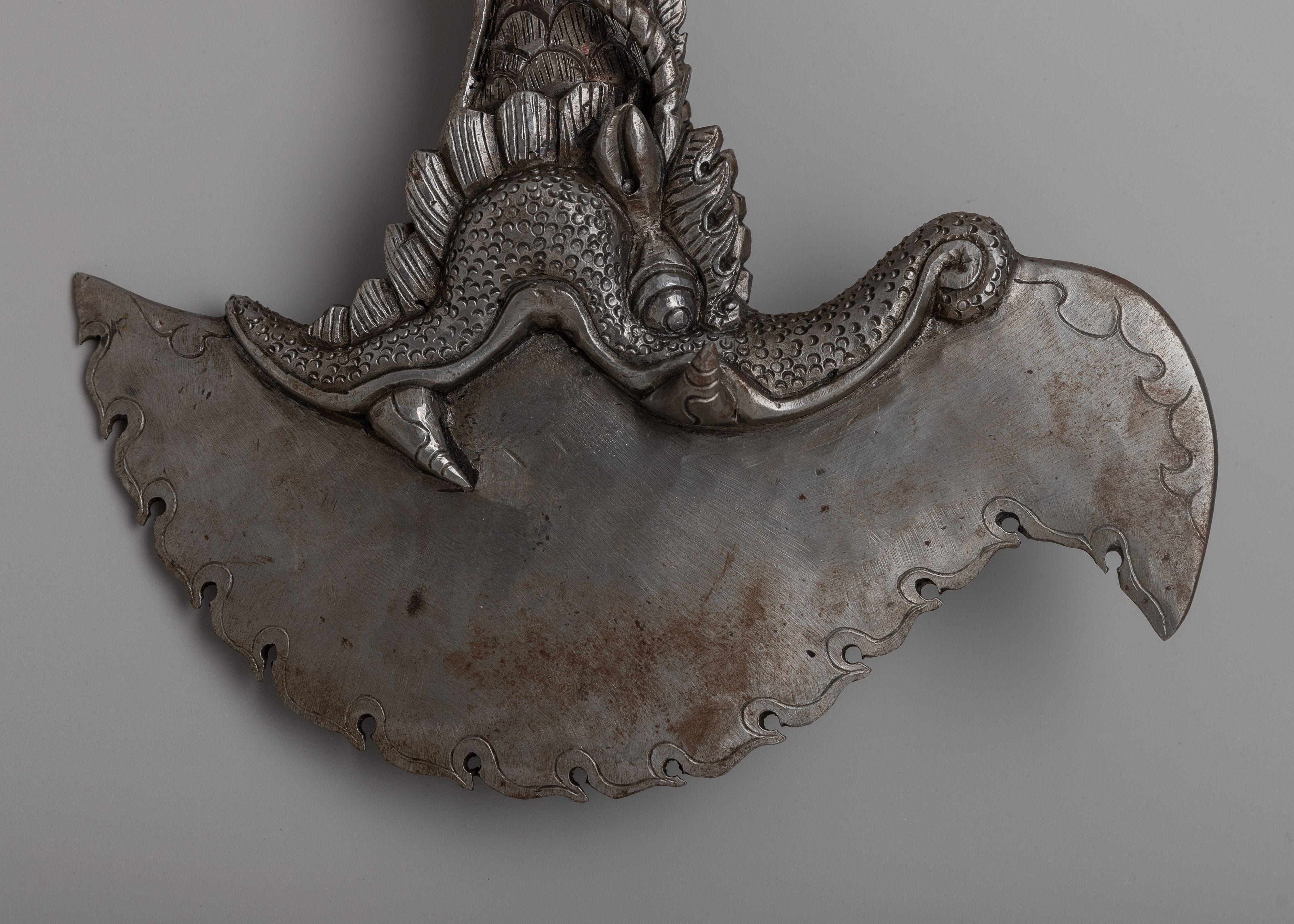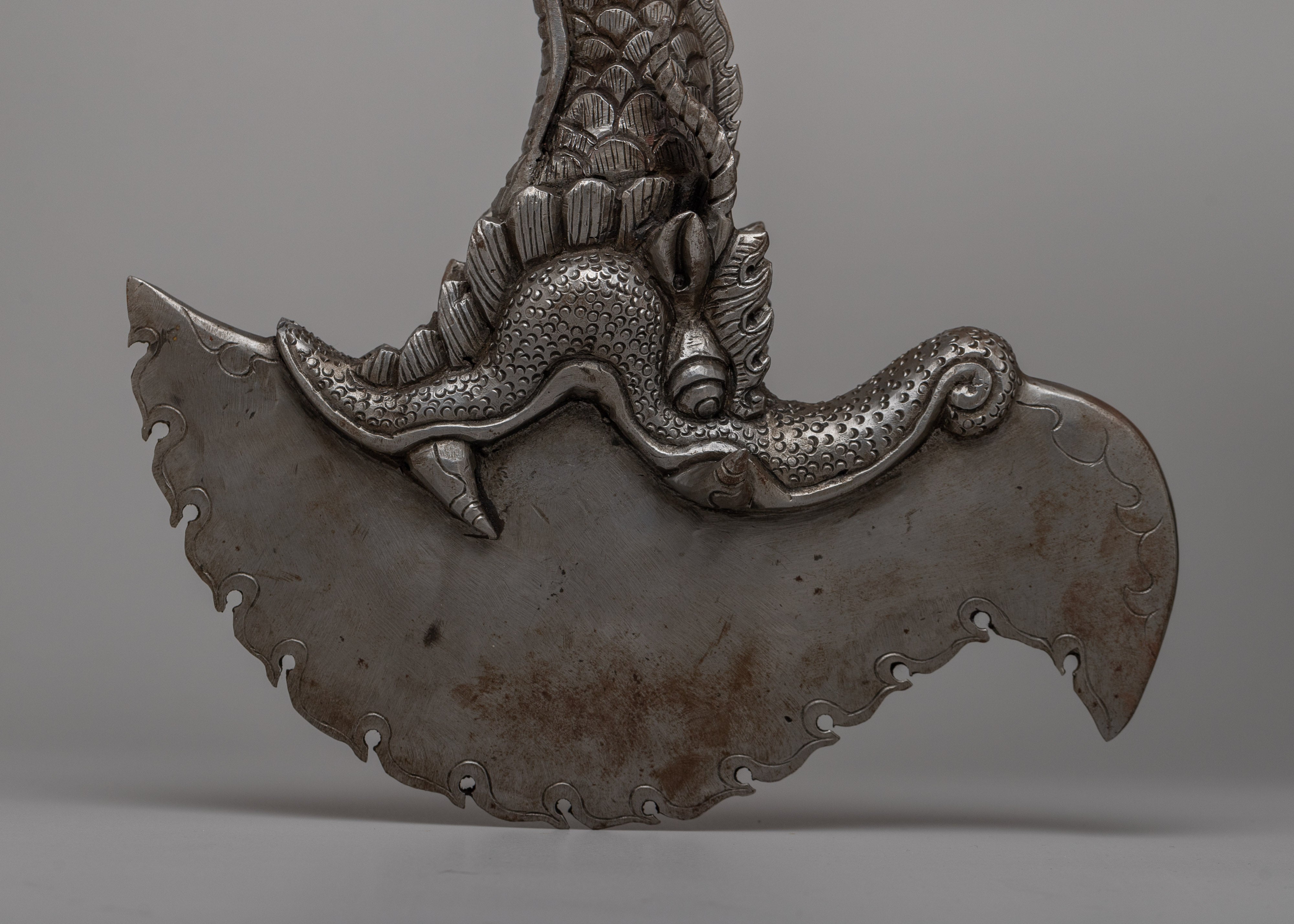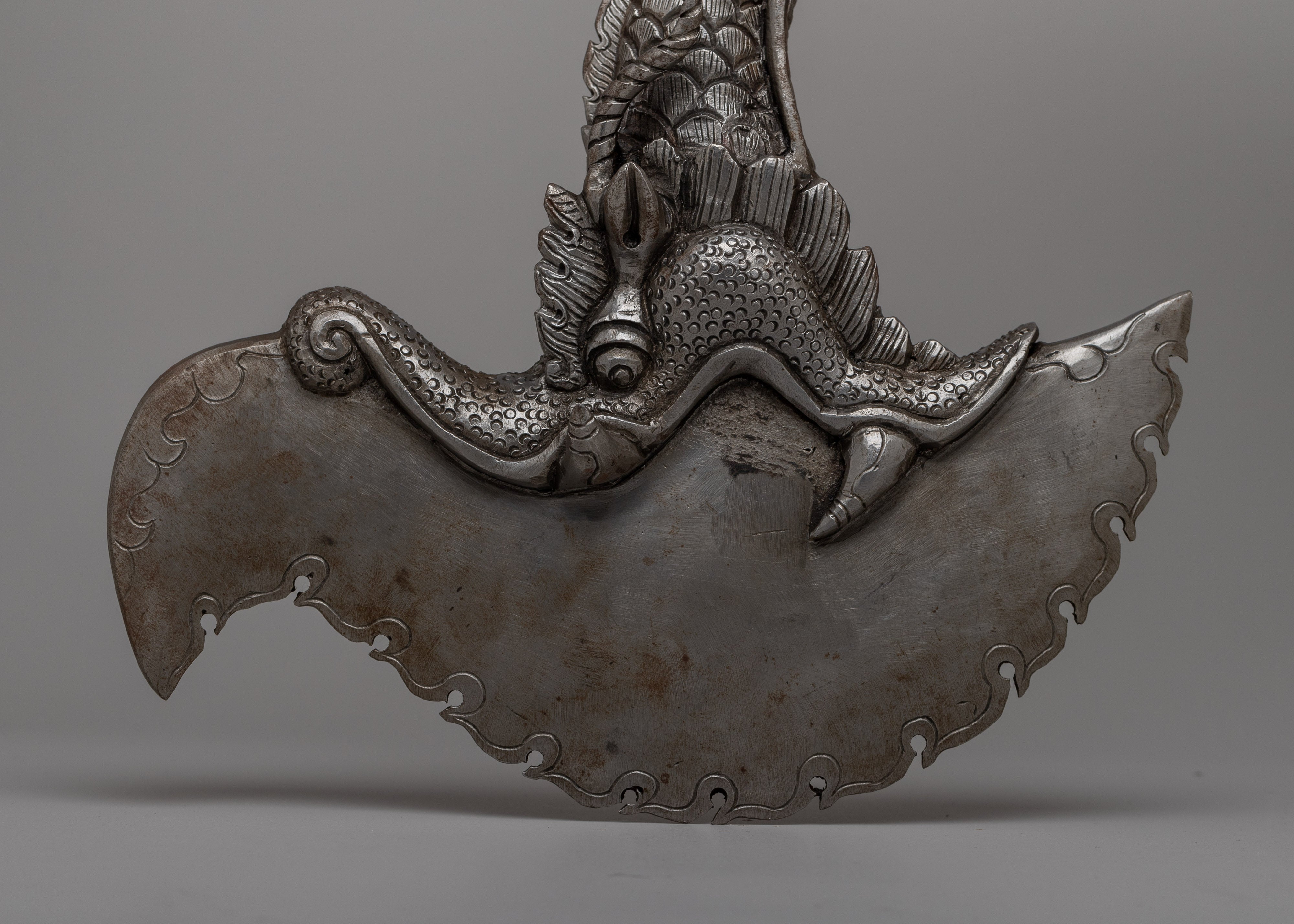Description
Iron Kartika Knife
About Ritual Item
Our Iron Oxidized Kartika Knife is a whispered legend where art meets spirituality. Crafted by hand from iron and softly kissed by oxidation, this Kartika is more than just a tool—it's a story told in metal. The crescent blade, resembling the arc of the moon, cuts through ignorance with an edge as keen as enlightened understanding.
This oxidized Kartika's every curve and contour narrates a tale of metamorphosis, from raw iron to a mysterious symbol. Like spirits of old Buddhist teachings, the oxidation weaves an aged look of ancient wisdom onto its surface. This Kartika is a travel into the depths of spiritual mysteries, not merely something to be held.
Picture yourself holding this Kartika, a physical representation of the transcendent. It is more than just a ceremonial tool; it is an agent of transformation and a silent guardian against the delusions of the material world. It is a symbol of spiritual awakening in your space and a masterwork at rising above the mundane.
Introduction to Phurba
The ritual dagger (Sanskrit: Kila; Tibetan: phurba) is essential to the dispelling of evil and is understood as being especially helpful in neutralizing the forces that impede Tantric Buddhist practice. Its origins are ancient, appearing in the Indian Rg Veda as the central blade of the vajra that Indra used to slay the primordial cosmic snake Vritra. Its Sanskrit term, Kila, which means peg or stake, was probably linked to Vedic sacrifices. The three-headed Vajrakila Buddha is invoked through meditation on the Vajrakila Tantra; an early Indian text first propagated in Tibet in the eighth century by Padmasambhava, one of the founding masters of Tibetan Buddhism.
---------------------------------------
Size: 35 cm (Height) x 26 cm (Width)
Weight: 2.57 kg
---------------------------------------
How to set up your own Buddhist Shrine?
-Find a clean, quiet, and uncluttered spot.
-Set up an altar table, and cover it with an altar cloth that calls to you.
-Place your sacred item (statue, thangka, or a picture of Buddha) at the center.

